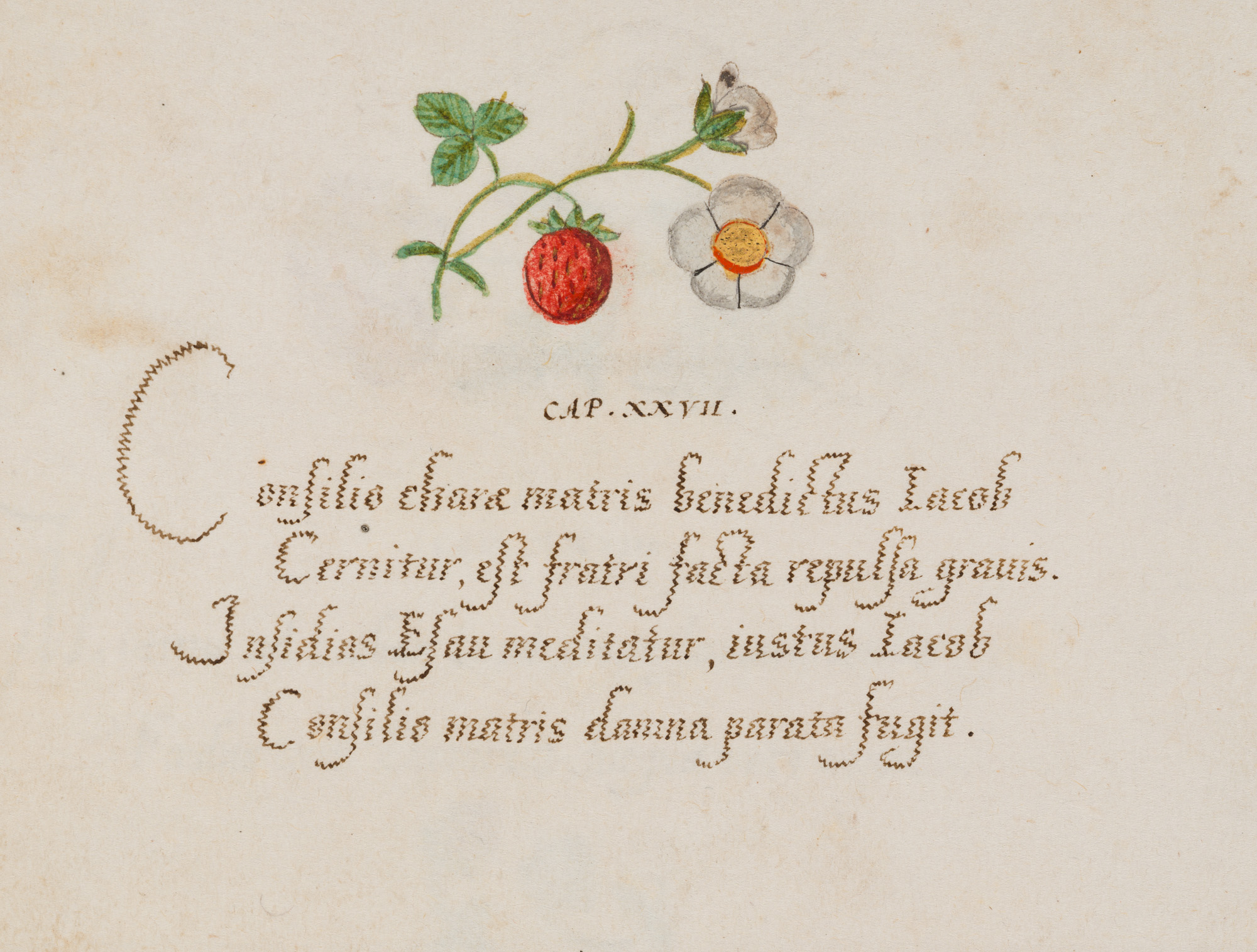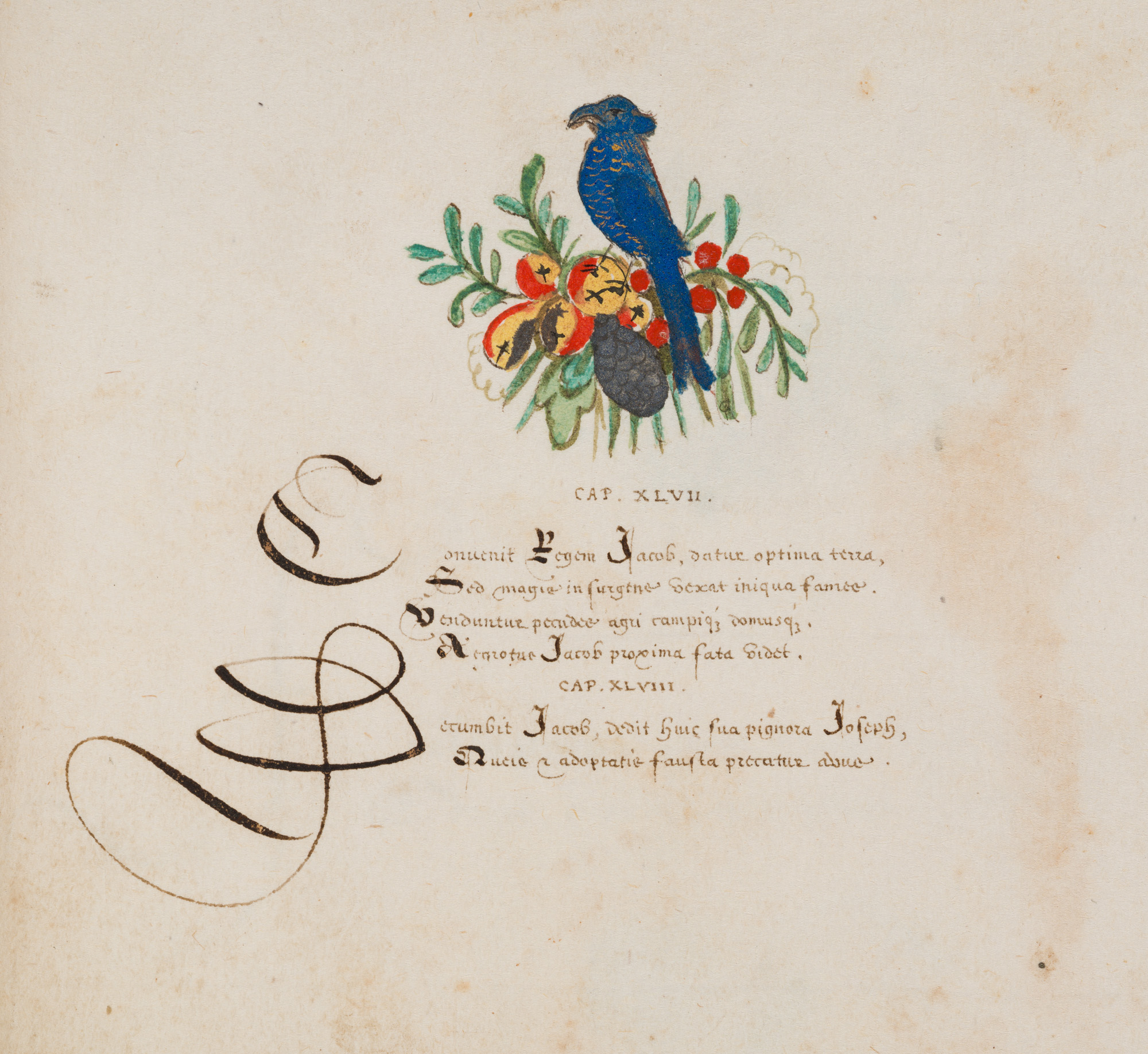
A never-before seen manuscript by Scottish-based artisan Esther Inglis, dating back to the early 1600s, was unveiled at The University of St Andrews this week at The International Conference on Medieval and Renaissance Scottish Languages, Literature and Culture (Friday 23 July).
Esther Inglis (c1570) was a skilled member of the artisan class, as well as a miniaturist, who possessed several skills in areas such as calligraphy, writing, and embroidering.
Born in Dieppe to French Huguenot parents fleeing religious persecution, she was raised predominantly in Edinburgh, where she learned the art of calligraphy from her father, Nicolas Langlois, and mother, Marie Presot. Over the course of her life, Inglis composed over sixty miniature books that displayed her calligraphic skill with paintings, portraits, and embroidered covers. She was not only an adept calligrapher, using over forty styles of handwriting, but she also illuminated her manuscripts with self-portraits, flowers and birds, or exquisite black-and-white title pages, historiated initials, and printer's devices copied from printed books. Many of her volumes are bound in velvet or silk, which she likely embroidered herself.
Now, for the first time, one of Inglis most rare and unseen manuscripts has been unveiled. The manuscript has been loaned to St Andrews for the conference having been lovingly preserved and cared for by the Gwynn family for almost 170 years.
The manuscript was the centrepiece of The International Conference on Medieval and Renaissance Scottish Languages, Literature and Culture, which hosted academics from around the world over 4-days. This marked the first opportunity for scholars to see in-person a hidden gem created by Esther Inglis.
Dr Samantha Bruce-Benjamin, a scholar of Inglis, who is continuing her research at the University of St Andrews, said:
"As the main body of Inglis's texts are calligraphic transcriptions of Protestant psalms and verse, she has too often been dismissed as a mere copyist whose manuscripts are notable only for her virtuoso calligraphy and vividly illumined artwork in miniature. Yet, Inglis found ingenious ways to be heard during a period when there was little place for women within early modern literature. She accomplished this by pioneering what we understand as an early modern peritext, the materials surrounding the main text - covers, ornamental frontispieces, dedicatory letters, and author portraits – which I consider a literary genre unto itself since it governs our entire perception of the ensuing text.
"We are all 'reading under the influence' of the publishers and other voices who contribute to literary peritexts. We can now read Inglis's peritexts as 'her story': an act of creation that has resonance for our contemporary culture. By mobilising this space and engaging in acts of literary ventriloquism, Inglis succeeded in manifesting an original and distinctive authorial presence. It is my hope, therefore, that Inglis's unique work can translate to numerous audiences beyond academia, including artists and creative writers who may feel marginalised or come from underserved communities".

A prolific contributor to the world of literature and the arts, nearly sixty extant manuscripts created by Inglis are currently on display at international libraries and museums worldwide, including at The National Library of Scotland, The Bodleian, The British Library, The Folger Library in Washington D.C. and now at The University of St Andrews. The nanuscript will now go on display at the Wardlaw Museum from the 18th-22nd July.
Dr Samantha Bruce-Benjamin is the author of The Art of Devotion, an Examiner and Bookreporter Best Book of 2010, and The Westhampton Leisure Hour and Supper Club. Born and raised in Edinburgh, Scotland, she holds a Master of Arts with Honors in English Literature and a PhD in Creative Writing from The University of Edinburgh. A former Random House and BBC literary editor, she lives in Edinburgh.
Category Research






